Repair, Not Re-Traumatize: Beginning to Heal Relationship Wounds
“Everyone says that forgiveness is a lovely idea, until they have something to forgive.”C. S. Lewis, the British writer, touched on the dilemma around forgiveness in this quote. Forgiveness is not easy, especially when “I'm sorry you feel that way.” is the only apology coming from those who inflicted the pain.
“Can he/she just move on?” People sometimes get frustrated about their partner’s unforgiveness. They have to tiptoe around their partner, trying to avoid their raw spots. “Ever since then, she has become super sensitive about my interactions with other women on social media,” said someone who discussed his wife’s “overaction” after he entered into an affair years ago.
The truth is, without genuine emotional connection between both parties, without corrective emotional response from the injured person, without actions that met the deep needs that have been ignored for so long, “moving-on” would be extremely hard, if not impossible. Even worse, an insensitive apology can re-traumatize the wounded person, confirming that they do not matter to the injuring person.
A relationship trauma comes from deep insecurity and helplessness. It can “eclipse hundreds of smaller positive events and, in one swipe, demolish the security of a love relationship. ”
“Until these incidents are confronted and resolved, true accessibility and emotional engagement are out of the question.” Dr. Sue Johnson, explained in her book Hold Me Tight: Seven Conversations for a Lifetime of Love.
How to Repair, Not Re-Traumatize Your Relationship
If you are working on apologizing to your partner, the following six steps that Dr. Sue Johnson recommended might give you an idea of how to repair, not re-traumatize your relationship:
1. Start an open conversation
To start the process of apologizing, the first step is to let the hurt partner speak their pain. Unless they are given enough space to share their experience, healing won’t begin. The wounded partner needs to stay focused on describing the incident and their feelings to help the other partner understand its meaning and emotional impact to the hurt person.
2. The injuring partner maintains emotional connection with the wounded partner while acknowledging the pain and their role in it.
During this step, the wounded partner also gives the injuring person a chance to share their feelings and explain their response to the incident. This step can help partners reach deeper mutual understanding, which is crucial to help the hurt partner restore predictability.
3. Couples revisit the development of disconnection during and after the incident.
Share their fears and longings and respond to them with compassion. In this way, they co-create a corrective emotional experience.
4. The injuring partner takes accountability for their role in inflicting the pain to their partner and apologizes.
This step helps the wounded partner regain trust that their partner genuinely cares about their pain.
5. The injuring partner asks the wounded partner about what needs to happen to help heal the injuries.
The wounded partner expresses their needs both back then and now.
6. Now a new narrative of the story is created.
The couple begins to share the experience as a journey from disconnection to reconnection.
Another resource for repair is the Gottman Repair Checklist. You and your partner may follow the checklist’s guidance to begin the process.
Repairing a relationship requires tremendous courage from both partners. For the wounded one, the risk lies in the question – can I trust him/her again? For the injuring one, an apology opens up a series of vulnerable feelings – remorse, shame, a sense of failure, fear of not being accepted, loss of control, uncertainty, etc.
Nevertheless, we are all fallible human beings, and all relationships experience fractions – from mild to severe. For many couples, what brings them closer is not the ability to avoid conflicts, but the courage to repair.
-
Trauma Therapy & PTSD Treatment
Trauma Therapy for Interpersonal Violence
Learning to Fight Against the Pattern, and Not Your Partner
How to Practice Nonviolent Communication with Your Partner
Self-Expression & Trauma: What to Do When You Feel Stuck In "I Don't Know"
How to Effectively Connect with Your Partner Using Stress-Reducing Conversations
How to Have Hard Conversations with Others: The Soft-Start Up Technique
Search Our Other Blogs!
Interested in Counseling for Relationship Trauma?
If you’re a Marylander who knows that counseling is the direction you need to take, the therapists at LifeSpring Counseling Services are here to help. We offer online counseling services for mindfulness, depression, anxiety, trauma, and grief and loss. We also offer Brainspotting as a specialized service, and Brainspotting can be done online, too!
Here’s how you can get started! Online counseling for relationship trauma isn’t the only service offered at our Maryland office
The counselors and social workers at our Maryland office also offer counseling services for trauma, grief and loss, boundary setting, communication skills, and difficult life transitions. We also offer specialized counseling services including Brainspotting and spiritually-integrated counseling. Because we are located next to several local universities, we also work with college students and international students.
Written by: Si Meng, LGPC
Si is a licensed therapist at LifeSpring Counseling Services in Maryland who specializes in trauma, depression, anxiety, life transitions, and mood disorders. She offers multicultural and bilingual services in both English and Mandarin.
Photos: Ketut Subiyanto, Karolina Grabowska, Gottman Institute, & Pavel Danilyuk
Date of download: 9/8/2022



